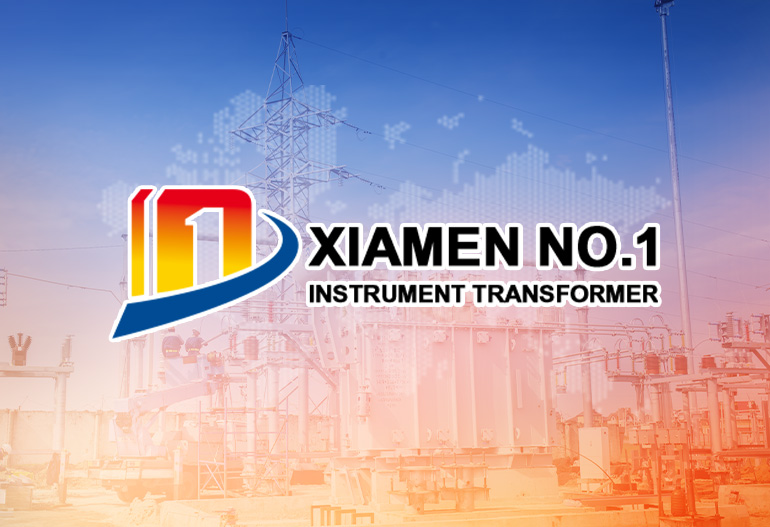Outdoor Voltage Transformers for Rural Electrification Projects
Enable Voltage Monitoring: Provide real-time voltage data to detect over/undervoltage conditions, which are common in rural grids due to fluctuating loads (e.g., agricultural pump usage) and limited generation capacity.
Support Protection Systems: Feed voltage signals to relays that isolate faults (e.g., line-to-ground short circuits) caused by storms, animal interference, or poor wiring, preventing cascading outages.
Facilitate Metering and Billing: Accurate voltage measurements are critical for energy metering, ensuring fair billing for rural consumers and revenue stability for utilities.
Enable Grid Stabilization: In grids with distributed renewable energy (e.g., small solar mini-grids), VTs monitor voltage fluctuations caused by variable generation, supporting voltage regulation via capacitors or tap changers.
Temperature Extremes: From -20°C in high-altitude regions (e.g., Himalayan villages) to +50°C in tropical areas (e.g., sub-Saharan Africa), VTs must maintain accuracy across a wide thermal range.
Moisture and Precipitation: Heavy rains, monsoons, or high humidity can cause insulation degradation. VTs require IP66/IP67 enclosures to prevent water ingress.
Dust and Contaminants: Agricultural activities (e.g., crop threshing) generate dust, while coastal rural areas face salt spray. Sealed designs with corrosion-resistant materials (e.g., hot-dip galvanized steel, UV-stabilized polymers) are essential.
Wildlife and Vermin: Rodents, birds, and insects can damage wiring or short circuits. VTs may include mesh guards or pest-repellent coatings.
Low Initial Cost: Prioritizing essential features (e.g., basic accuracy class 0.5 or 1.0) over advanced functionalities (e.g., digital outputs) reduces upfront expenses.
Minimal Lifecycle Costs: Design for long service life (15–20 years) and low maintenance (e.g., sealed, oil-free designs to avoid periodic oil testing or replacement).
Scalability: Modular VTs that can be easily upgraded (e.g., adding digital communication later) align with phased rural grid expansion.
Surge Withstand Capability: Compliance with IEC 60044-2 (voltage transformer standards) for impulse voltage withstand (e.g., 60kV for 11kV systems) to survive lightning strikes.
Mechanical Durability: Resistance to vibration during transportation (e.g., on unpaved rural roads) and wind loads (up to 150km/h in cyclone-prone areas).
Overload Tolerance: Ability to operate at 120% of rated voltage for extended periods, common in rural grids with unbalanced loads.
Simple to Install: Lightweight (≤50kg for pole-mounted units) for manual handling, with tool-free terminals and clear wiring guides.
Maintenance-Friendly: Features like visible oil level indicators (for oil-immersed VTs) or self-diagnostic LEDs reduce the need for specialized testing equipment.
Tamper-Resistant: Lockable enclosures to prevent theft of copper windings, a common issue in remote areas.
Dry-Type VTs: Using epoxy resin or silicone rubber insulation, these eliminate the risk of oil leaks (critical in environmentally sensitive rural areas, e.g., near farmland or water sources). They are maintenance-free but may have lower heat dissipation, making them suitable for low-to-medium loads.
Oil-Immersed VTs: Mineral oil or biodegradable ester oil provides superior insulation and cooling, ideal for high-temperature or high-load rural grids. Modern designs use hermetically sealed tanks to prevent oil contamination, reducing maintenance.
Composite Insulators: Fiberglass-reinforced polymer (FRP) insulators replace traditional porcelain, offering lighter weight, better resistance to vandalism, and reduced susceptibility to flashover in polluted environments (e.g., near brick kilns).
Electromagnetic Voltage Transformers (EVTs): Most common in rural projects due to low cost and simplicity. Single-phase EVTs (for 230V lines) or three-phase units (for 400V three-phase systems) are available, with accuracy classes 0.5 to 3.0.
Capacitive Voltage Transformers (CVTs): Used for higher voltages (33kV and above) where EVTs become bulky. CVTs also act as coupling capacitors for power line communication, useful for remote monitoring in areas with limited cellular coverage.
Low-Power Voltage Transformers (LPVTs): Emerging as a cost-effective alternative, these small, lightweight units output low-power signals (e.g., 0–5V) directly to digital meters, eliminating the need for separate signal conditioning.
Weatherproof Enclosures: Stainless steel or powder-coated aluminum enclosures with gaskets to seal against moisture and dust. Ventilation slots with filters prevent heat buildup without allowing debris entry.
Pole-Mounted Designs: Compact VTs mounted directly on distribution poles (using U-bolts) reduce the need for concrete foundations, speeding installation in remote areas.
Grounding Provisions: Integrated grounding lugs to ensure proper earthing, critical for safety and surge protection in grids with limited grounding infrastructure.
Analog-to-Digital Converters (ADCs): Integrating simple ADCs allows voltage data to be sent to local controllers (e.g., for automatic voltage regulation via tap changers).
LoRaWAN/NB-IoT Communication: Low-power wireless modules enable remote monitoring of voltage levels, reducing the need for site visits. This is valuable for mini-grids managed by community cooperatives.
Surge Counters: Built-in counters track the number of voltage surges, helping utilities prioritize maintenance in storm-prone areas.
Challenge: Remote rural communities often lack paved roads, making it difficult to transport heavy equipment. For example, in the Peruvian Andes, VTs must be carried by mules to villages accessible only by footpaths.
Solutions:
Use lightweight VTs (≤30kg) designed for manual transport.
Partner with local transporters familiar with terrain-specific logistics (e.g., camel caravans in Saharan communities).
Pre-assemble pole-mounted units at regional hubs to minimize on-site assembly time.
Challenge: In coastal rural areas (e.g., Bangladeshi delta regions), salt-laden air accelerates corrosion, while in arid regions (e.g., Rajasthan, India), sand abrasion damages insulation.
Solutions:
For coastal areas: Use 316-grade stainless steel enclosures and silicone rubber insulators with hydrophobic coatings.
For arid regions: Add dust shields over ventilation slots and use abrasion-resistant insulator coatings (e.g., polyurethane).
In cold climates: Specify low-temperature oil (pour point ≤-40°C) for oil-immersed VTs to prevent freezing.
Challenge: Rural utilities often lack technicians trained in VT installation and maintenance. A 2023 survey in East Africa found that 60% of rural electrification projects reported improper VT grounding due to skill gaps.
Solutions:
Provide simplified installation manuals with pictograms (not just text) for low-literacy contexts.
Offer on-site training workshops, focusing on critical tasks like grounding and connection checks.
Partner with local vocational schools to develop VT maintenance curricula.
Challenge: Rural electrification is often subsidized, and budgets may not accommodate high-quality VTs. This leads to use of substandard, uncertified units that fail within 2–3 years.
Solutions:
Advocate for international standards (e.g., IEC 60044-2) in project tender documents to avoid low-quality imports.
Explore bulk purchasing with neighboring utilities to negotiate lower prices for certified VTs.
Secure grants from organizations like the World Bank or Green Climate Fund to subsidize upfront costs of durable VTs.
Challenge: In economically vulnerable areas, VT components (e.g., copper windings, metal enclosures) are targets for theft. In parts of rural Brazil, 30% of VT failures are attributed to theft.
Solutions:
Use low-copper designs (e.g., aluminum windings) to reduce theft incentive.
Install tamper alarms (e.g., magnetic sensors that trigger a local siren if the enclosure is opened).
Engage local communities in protecting grid assets (e.g., via community watch programs with small incentives).
Lightweight design (45kg) for transport by motorcycle to remote villages.
Tamper-proof enclosures with welded seams to deter copper theft.
Integration with LoRaWAN sensors to send voltage data to a community-managed control center, enabling quick response to voltage dips caused by agricultural pump usage.
UV-stabilized epoxy insulation to withstand intense sunlight.
Dust-tight enclosures with HEPA filters to prevent winding contamination.
Simple bolt-on mounting for installation by local crews with minimal training.
Oil-immersed VTs with low-temperature ester oil (operational to -50°C).
Steel mesh guards around enclosures to prevent animal damage.
Integration with satellite communication for remote monitoring, as cellular coverage is unavailable.
Wider measurement ranges (e.g., 50–120% of nominal voltage) to track renewable-induced variations.
Digital outputs (e.g., IEC 61850-9-2) to interface with smart inverters, enabling real-time voltage regulation.
Built-in Bluetooth for on-site diagnostics via smartphones (eliminating the need for specialized tools).
Edge computing to detect voltage anomalies (e.g., incipient faults) and send alerts via SMS to local operators.
Biodegradable ester oils (replacing mineral oil) to minimize soil/water contamination in case of leaks.
Recycled aluminum enclosures and bamboo-reinforced composite insulators (locally sourced where possible).



